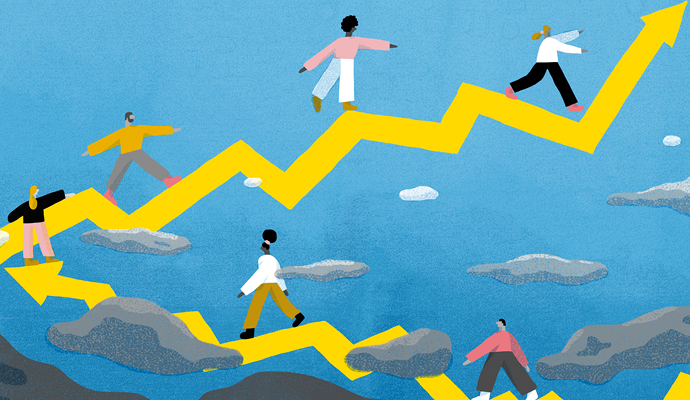A Walled Garden for Capital
New socially responsible trading networks seek to facilitate long-term profitable investment.
(originally published by Booz & Company)When the global financial system broke down in 2008, many people realized for the first time that the credibility of large institutions, no matter how well regarded, could turn out to be flawed. Now, as governments and large financial institutions seek to rebuild trust, new socially responsible trading networks are emerging. Their goal is to facilitate long-term profitable investment without disruption by speculators. To accomplish this, they have set themselves up as “walled gardens,” screening both companies and sources of capital and bypassing the trading monopolies in central capitals like London, New York, Frankfurt, and Tokyo. They base their attractiveness to investors on a long-standing perception that financial trustworthiness, commitment to environmental and social accountability, and high levels of long-term performance tend to go together. As they grow, they could have immense impact, not just on the portfolios of their investors and the balance sheets of the companies involved, but on the financial system as a whole.
The roots of this new approach go back to the 1980s. Organizations like the Calvert Social Investment Fund (where I was an advisor from 1982 to 2004), Innovest Strategic Value Advisors, and KLD have pioneered opportunities for investors to concentrate their money in companies that are environmentally friendly and beneficial to their communities. For 25 years, these funds and investor advisory groups have screened companies for good environmental, social, and governance (ESG) practices. As the mainstream financial system (and its regulators) became more speculative and risk-prone in the 2000s, these organizations stepped in to fill the void.
Personally, I lost my remaining trust in Wall Street in 2007, when the U.S. Securities and Exchange Commission suspended its “uptick rule,” which prohibited short selling in any particular stock except during its upward momentum. Bear raiders, armed with algorithmically generated shorting strategies, could drive down stocks without even bothering to buy or borrow their shares! It was appalling: Traders made a lot of money while many small company stocks were devalued before the companies could develop their products. As an investor in several such companies with wind, solar, and geothermal businesses, I saw stocks get hammered, regardless of the companies’ fundamentals.
When the collapse came, some like-minded investors and traders had already begun to build new exchanges from the bottom up. An underlying infrastructure already existed in the form of alternative trading systems (ATS). ATS are electronic markets such as Instinet and Archipelago, regulated by the SEC, that broker financial products outside traditional stock exchanges. The socially responsible trading networks, which use the ATS infrastructure as a platform, are new marketplaces where investors and companies can meet. They screen for ESG criteria, and they attract primarily nonspeculative long-term investment.
One such new marketplace is Entrex, an “entrepreneurial exchange” based in Chicago and focused on companies with less than US$250 million in annual revenue. Another private liquidity network, called Wall Street Without Walls, links credit unions and community development financial institutions to companies. Three electronic peer-to-peer lending sites — Prosper Loan Marketplace in the U.S.; Zopa in the U.K., U.S., Japan, and Italy; and Qifang in China — as well as hundreds for microlending (including MicroPlace, Kiva, Accion, and Women’s World Banking), are filling a huge need worldwide. An index of private green companies in Brazil is now in the planning stage with Entrex and the green broker-dealer Iowa Progressive Asset Management.
Consider the cultural DNA of exchanges founded along these lines. They are as robust as Wall Street in their back-office efficiency and their clearing and settlement provisions, but they have far less overhead. They trade in small and midsized enterprises: the 400,000 companies that provide most of the jobs in the United States. These companies are generally privately held; they tend to be unattractive to short sellers and market manipulators and leery of venture capital and private equity. Many have no interest in making an initial public offering on Wall Street.
These new marketplaces are less regulated than the public markets. Investors are protected by the screening, the enhanced transparency, and the disclosure requirements that constitute the wall of the garden. The networks work because the people inside the gates can trust one another. Corporate books are kept open and collectively scrutinized, and the emphasis on socially responsible investing makes it more likely that these companies will do well. In his book Investing in a Sustainable World: Why Green Is the New Color of Money on Wall Street (AMACOM, 2008), Matthew J. Kiernan shows that multinational companies that fit the ESG screens outperform others, even on the financial front. It turns out that the practices that lead to greater responsibility also tend to produce better-run companies.
Companies, of course, also need their investors to be transparent. For pension funds in these new marketplaces, the U.N.’s Principles for Responsible Investment provides some credibility. Signatories promise to be active owners, to report openly on their own activities, and to seek disclosure about ESG practices by the companies in which they invest. Institutional investors who have agreed to abide by these principles represent about $17 trillion worth of assets under management. (My own company, Ethical Markets Media, is a supporting signer.) Venture capitalists are being held to higher standards by Web sites such as www.thefunded.com, which carries ratings and reviews by entrepreneurs. Trade associations including the Social Investment Forum in the U.S. and the U.K., firms like Tomorrow’s Company in the U.K., and networks such as the Investors’ Circle and Cleantech Forum have a similar ethic of transparency. I am one of 600 members of the Social Venture Network; we all fill out a form identifying our own standards for long-term, sustainable, value-conscious returns.
In an era in which Ponzi schemes manufacture false data to present the illusion of transparency, the collaborative nature of these networks is important. Members routinely share information about the financial, social, and ecological performance of their investments. Perhaps that’s why the socially responsible investor movement now accounts for $2.3 trillion in managed assets in the U.S. alone. That fact, in turn, will make these alternative exchanges increasingly attractive to larger companies. Often, large companies are too big and diverse to pass the screens we use; even the best of them tend to be out of compliance in several places. They have believed for too long that a company could externalize all its social and environmental costs and pass them on to future generations or conceal them.
But some large companies are changing their thinking and may well pass through the screens in the future. They are internalizing their textbook “externalities” (such as the costs of pollution and inefficiency) on company balance sheets and changing their practices accordingly. Meanwhile, even if the mainstream financial industry regains the trust of its constituents, alternative exchanges will survive, if only because investors and financiers are enthusiastically using them. These new financiers are invisible to Wall Street and government so far. But since the financiers are cherry-picking the trust and capability that are left in the system, and using it to grow the greener sustainable sectors that most need growth, they won’t remain invisible for long.![]()
Author profile:
- Hazel Henderson is the president of Ethical Markets Media, an independent multimedia company that reports on sustainable, green, and ethical companies and investments. She is the co-creator of the Calvert-Henderson Quality of Life Indicators and the author of nine books, including Ethical Markets: Growing the Green Economy (Chelsea Green, 2006), and is a fellow of the U.K.’s Royal Society of Arts.



